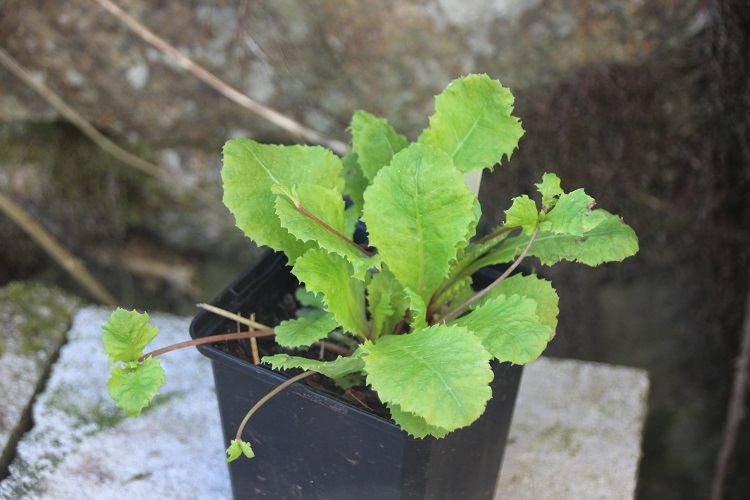 |
A vigorous petiolarid primula from Sichuan. It increases by stolons and I had hoped that it might be more reliable if it propagated itself freely. I was wrong. John Richards says: "P. hoffmanniana was classified by Smith and Fletcher near the Himalayan P. petiolaris. However, the fragmentary material cannot be separated from P. moupinensis. From the description, particularly with respect to the bilobed petal-lobes which is a condition rare in this group, it is possible that the newly described P. prevernalis also falls within this group. P. moupinensis was collected in 1987 from the Yulong Shan by Ron McBeath, and in 1991 by Needham from Moupine (Baoxing) (EN 3142). The Needham introduction is stoloniferous as is CD&R 609 from the Erling Shan (1989) and CD&R 2386 from Wolong (1995). The latter gained a PC in 1998. A non-stoloniferous form from the Gonga Shan gained a PC under CD&R 2457 in 2001. P. moupinensis is proving tolerant of relatively warm dry conditions in summer and is hardy (although it prefers cloching in damp winters), and as it is very readily propagated by the runners in the stoloniferous forms, it has proliferated remarkably during the 1990's. It is now perhaps the petiolarid most often encountered in cultivation. It is a pretty plant, but unlike its Himalayan relatives, flowers are only borne in twos and threes in the stoloniferous form, so that the effect is rarely striking. However, the non-stoloniferous form, which is not so readily propagated, does produce more flowers. No hybrids have yet been reported." Writing in the journal of the Alpine Garden Society about the Loughborough show (1998), Bob Wallis says: "However, for me, the most interesting plant of the day was Primula moupinense I had never seen this before and then a number of plants appeared on thne same day. This petiolarid species is rather shy flowering both in the wild and in cultivation. The result is that one is drawn to examine eacxh delicate pale pink flower carefully to pick out the little green eye and note the notch in the end of the petal making each bilobed, the only petiolarid to exhubit this trait. One exhibit on show was a batch of seedlings as evidenced by the presence of both thrum- and pin-eyed flower forms. Propagation may be better from the strawberry-like runners, which are produced in abundance." |
|
| 15th May 2019 | ||